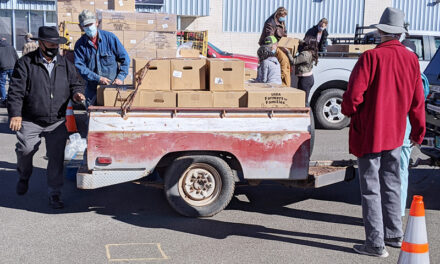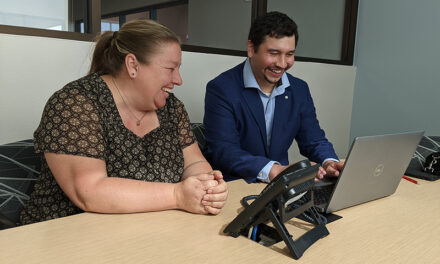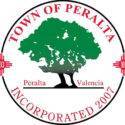Where’s my vaccine?
That is the question repeated across Valencia County and the state, but so far there seems to be very few answers.
New Mexico Department of Health spokesman Matt Bieber has said there is a very high demand for the vaccine in New Mexico, with 623,873 people registered through the state’s vaccine website and only 448,500 doses received.
While everyone waits, local health care officials and emergency managers have given what information they have to local government entities.
At a recent workshop of the Belen Board of Education, Tia Montoya, a public health nurse with the Belen Public Health Office, gave the board details on the vaccine process.
Montoya said her office typically has little time to prepare for disbursing the doses.
“We request an allocation every week and at the end of the week, we are told what it will be. Let’s say yesterday, we asked for 900. By Wednesday or Thursday, we’ll know how many we get,” Montoya said. “Our coalition includes Belen Consolidated Schools, Los Lunas Schools and the municipalities. We are working together to get as many vaccines into as many arms as possible.”
All vaccine vials contain at least five doses each, she said, but providers have been able to get six doses out on a consistent basis.
“Whenever we have a primary event, where everybody is getting their first dose, we know we will have additional doses towards the end,” she said. “We have (BCS Health Services Coordinator Deborah Baca) and other folks within the schools contact individuals through the schools. Right now that is our only means to get as many school personnel immunized informally.”
While teachers are part of the Phase 1B vaccination group, the state has only authorized vaccines for the first two 1B groups — people 75 or older, and people 16 and older at risk for COVID-19 complications. Teachers are among the third priority group in 1B.
Baca said about 250 district employees have received their first vaccine dose, with close to 200 more wanting the vaccine.
Anyone who has received their first dose is automatically allocated the second, Montoya said. She said people in the community might see vaccine events but not hear about residents being invited to schedule an appointment because they are getting their second dose.
The state has also adopted the CDC guidance on COVID-19 booster doses and expanded the time window for administering the second dose to up to 42 days. Previously, providers tried to give the second dose of the Pfizer vaccine 21 days after the first and the second Moderna dose 28 days after.
New guidance from the CDC allows for the longer time frame if sticking to the initial deadline isn’t feasible.
Baca said it is her hope to have any BCS staff interested in getting vaccinated in for their first dose by mid April.
“We have a deep freezer for the vaccines in the county, so knowing we have vaccines in our hands rather than ordering each and every time, things are looking better,” she said. “We are hoping with that, clinics can be added.”
She added that Belen Public Health Office staff have been working diligently with both school districts to make sure any extra doses made available to teachers went to people in the first two priority groups of 1B.
“We have to look at them in terms of meeting the criteria. We’re checking date of birth and looking at other requirements to be as fair as we can to the community as well as our own staff,” Baca said.
At a recent Valencia County Commission meeting, Valencia County Emergency Manager Sarah Gillen said she and other emergency personnel in the county have been communicating regularly with people across the state, including the DOH, regional vaccine coordinators and local health offices to set up vaccine clinics and keep information flowing.
She said she had heard complaints of residents being asked to travel to other jurisdictions for vaccines.
“One of our directors was told to go to Mountainair,” Gillen said. “The DOH is setting these locations. The (local) public health office and Valencia County don’t have control. When those happen, the vaccine is counted in the county of the resident.”
Gillen said many Valencia County seniors were confused and disappointed when a 400-dose vaccine clinic organized by the state’s Aging and Long-term Services Department didn’t happen recently.
“In looking at the logistics, the size of a venue to be able to give that many vaccines in a drive thru, with an estimated time of 25 vaccines an hour, we were looking at a 12-hour day,” Gillen said.
In addition to having personnel on their feet for hours at a time, the emergency manager said they also had to consider seniors waiting in their vehicles for that same time period, most likely without access to necessary services such as bathrooms or food.
“Plus, we already had clinics lined up that week for 600-plus second doses,” she said. “This kind of equated to telling me on Monday to have a plan for the Matanza by Friday. Pulling together all those logistical partners was just not something we could do successfully and I don’t want to set the county up for failure.”
Gillen said she also wanted to meet the ALTS pharmacist while he was administering vaccines in communities in the northern part of the state to observe his procedures for delivery.
“I don’t know what he was doing. For all I know, he was driving around with the vaccines in a cooler,” she said. “This event was not sanctioned by DOH. There were issues that raised some red flags.”
Vaccination updates; numbers
When the DOH launched it’s COVID-19 vaccine dashboard, vaccine numbers were available by county, but those numbers combined people who were partially and fully vaccinated.
The percentage of residents vaccinated was also based on a county’s total population, instead of the population eligible for the vaccine.
For example, U.S. Census American Community Survey shows an estimated 2019 total population for Valencia County of 76,688, with about 14,000 people younger than 16 who are not eligible for the vaccine.
After a mid-day update on Tuesday, Feb. 16, the dashboard now provides separate numbers for people partially and fully vaccinated in each county, as well as indicating the percentage of the eligible population vaccinated.
In Valencia County, 8,611 people have received their first shot of two, which is 14.4 percent of the 59,871 people eligible. There are 4,303 people fully vaccinated in the county — 7.2 percent of the eligible population.
The updated dashboard also includes percentages of fully- and partially-vaccinated people by age group and race/ethnicity statewide.
In the age group given the highest priority in the 1B phase, those 75 and older, 44.4 percent of the 153,589 are partially vaccinated and 14.8 percent are fully vaccinated.
Of people ages 60 to 74, 21.3 percent of 360,831 have been partially vaccinated and 8.9 percent have been fully vaccinated.
In people 16 to 59 years old, a population of 1,166,185, 13 percent have been partially vaccinated and 7 percent are fully vaccinated.
Looking at vaccines by race/ethnicity, there were 780,908 people who identified as Hispanic or Latino and 12 percent have been partially vaccinated, while 5.7 percent have been fully vaccinated.
The second highest population by race/ethnicity was White, with 686,030, and 17.1 percent have been partially vaccinated and 7.8 percent fully vaccinated.
Among the 145,589 people identifying as American Indian or Alaska Native, 22.1 percent are partially vaccinated and 8.9 percent fully.
Nine percent of the Black or African-American population of 36,934 people have been partially vaccinated and 4.5 percent are fully vaccinated. Of the 31,147 Asian or Pacific Islander population, 18.3 percent have been partially vaccinated and 9.7 percent fully.
Statewide, there have been 303,031 primary doses given and 138,755 booster doses administered as of Tuesday, Feb. 16.
In the first weeks of the vaccination campaign, the state allocated vaccines to locations across New Mexico based on population and number of health care providers, specifically the number of high-contact providers, according to a recent press release.
Since that time, DOH has adjusted distributions based on provider capacity, efficiency and local interest in getting vaccinated.
Guidance from the CDC says people who have been fully vaccinated — meaning at least two weeks have passed since they received the second dose of a two-dose vaccine or one dose of a single-dose vaccine — do not need to quarantine if they are exposed to the coronavirus.
In the updated guidance, the CDC said quarantining is not necessary for fully-vaccinated people within three months of having received their last doses as long as they do not develop any symptoms.
The CDC already recommends that people who have had COVID-19 and recovered, and have been newly exposed to someone who is infected within 90 days of their own recovery do not need to quarantine.
Julia M. Dendinger began working at the VCNB in 2006. She covers Valencia County government, Belen Consolidated Schools and the village of Bosque Farms. She is a member of the Society of Professional Journalists Rio Grande chapter’s board of directors.

















